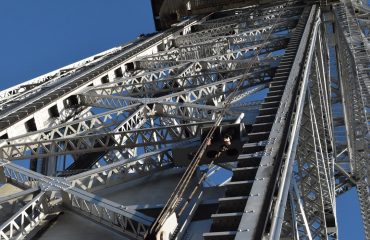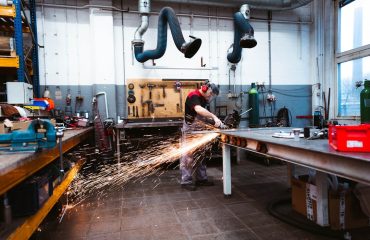Universal Parallel Flange (UPN) profiles, also known as parallel flange channels, are versatile structural steel sections widely employed in various engineering applications. Their unique geometry, characterized by parallel flanges and a web, makes them ideally suited for a range of structural tasks, from supporting beams and columns to forming frameworks and bracing systems. This comprehensive guide delves into the intricacies of UPN profiles, exploring their properties, applications, and design considerations.
Understanding UPN Profile Geometry and Properties
UPN profiles are defined by their dimensions, specifically the height (depth), width (flange width), and thickness of the web and flanges. These dimensions directly influence the section’s area, moment of inertia, section modulus, and radius of gyration. These properties are crucial in determining the profile’s load-bearing capacity and suitability for a particular application. Manufacturers provide detailed specifications, including material properties (typically mild steel, but other grades are available), which are essential for accurate structural calculations. Understanding these properties is the foundation for successful UPN profile design and selection. Furthermore, the parallel flanges contribute to efficient load distribution, making them suitable for applications where bending stresses are significant. The relatively high section modulus for their weight offers a good strength-to-weight ratio, a key consideration in many structural projects.
UPN Profile Applications in Structural Design
The versatility of UPN profiles lends itself to a wide array of applications in structural engineering. They are commonly used as:
- Beams and Girders: UPN profiles can effectively support loads over spans, particularly in situations where lateral stability is crucial. Their parallel flanges contribute to increased resistance against bending.
- Columns and Supports: Used as vertical supports, often in conjunction with other structural members, UPN profiles provide stability and transfer loads to foundations.
- Bracing and Lateral Support: Their shape makes them excellent for bracing systems, enhancing the stability of larger structures against lateral forces (wind, seismic activity).
- Framework Members: In building frameworks, UPN profiles are frequently used as secondary beams, connecting primary structural members and distributing loads.
- Railings and Handrails: Their strength and relatively slender profile make them suitable for railings and handrails in various applications.
The specific application dictates the required profile size and grade of steel, emphasizing the importance of accurate load calculations and material selection.
Design Considerations and Load Calculations for UPN Profiles
Designing with UPN profiles necessitates careful consideration of various factors. Accurate load calculations are paramount. These calculations must account for:
- Dead Loads: The weight of the structure itself and permanently attached elements.
- Live Loads: Variable loads such as occupancy loads, snow loads, and wind loads.
- Impact Loads: Loads resulting from sudden impacts or vibrations.
Appropriate safety factors are applied to these calculated loads to ensure structural integrity. Software packages and hand calculations using relevant structural engineering formulas are employed to determine the required section properties and ensure that the chosen UPN profile can adequately withstand the anticipated loads. Furthermore, connection design is crucial; welding, bolting, or a combination of methods are used to securely join UPN profiles to other structural members. The strength of the connections must be sufficient to prevent failure under load.
Comparing UPN Profiles with Other Steel Sections
UPN profiles are often compared to other steel sections like I-beams (IPE profiles), channels (U profiles), and angles. Each section type possesses unique strengths and weaknesses. I-beams generally offer superior bending resistance due to their larger moment of inertia, but they are also heavier. Channels (U profiles) are similar to UPN profiles but lack the parallel flanges, potentially reducing their bending stiffness. Angles are used for bracing and connections but are less efficient for beam applications. The choice of section depends on the specific design requirements, balancing factors such as strength, weight, cost, and availability.
Material Selection and Corrosion Protection for UPN Profiles
The material properties of UPN profiles significantly influence their performance. Mild steel is the most common material, offering a good balance of strength and cost-effectiveness. However, higher-strength steels or specialized alloys might be necessary for demanding applications. Furthermore, corrosion protection is crucial for ensuring the long-term durability of UPN profiles, especially in outdoor or corrosive environments. Common methods include hot-dip galvanizing, painting, and powder coating. The choice of corrosion protection method depends on the environmental conditions and the required lifespan of the structure. Proper surface preparation is essential for optimal adhesion and effectiveness of the chosen protection method.
In conclusion, UPN profiles are indispensable components in many structural engineering projects. Understanding their properties, applications, and design considerations is crucial for engineers to utilize these versatile sections effectively and safely. By carefully selecting the appropriate profile size and grade, implementing robust connection designs, and incorporating adequate corrosion protection, engineers can leverage the strength and efficiency of UPN profiles to create durable and reliable structures.
Tags: UPN profiles, structural engineering, steel sections, design calculations, structural design




